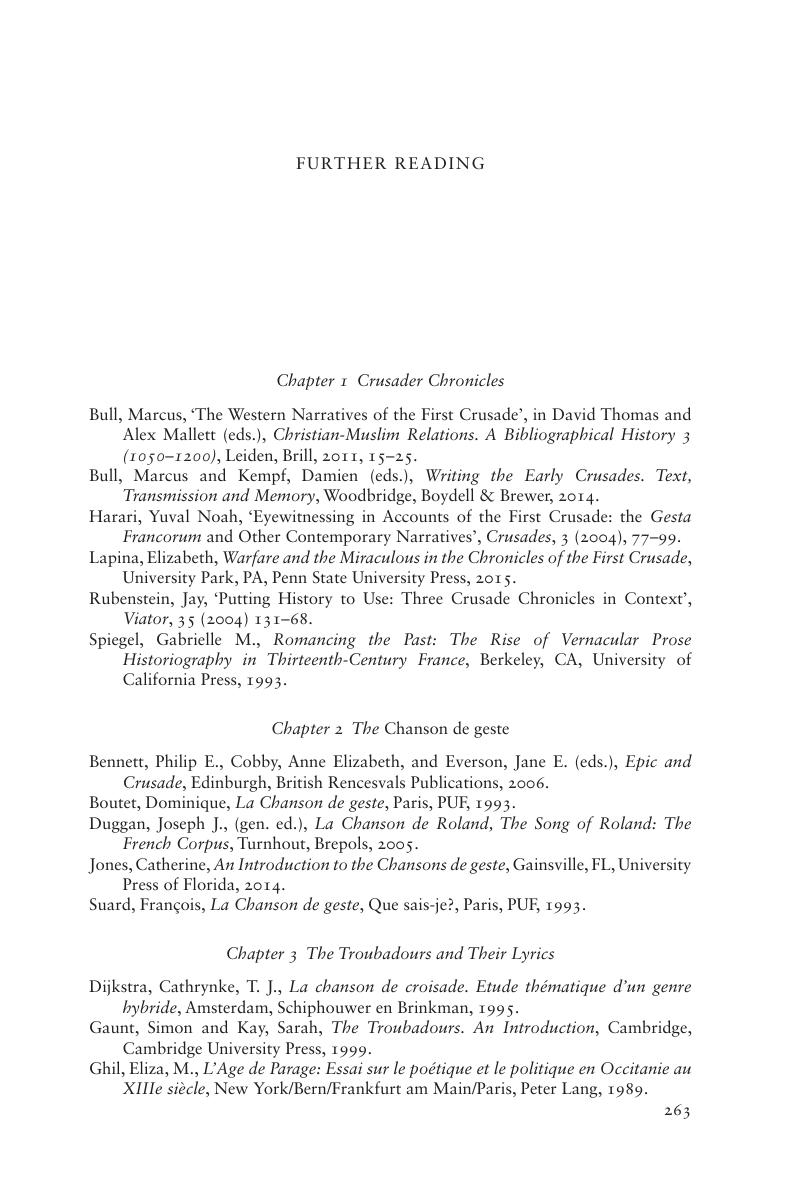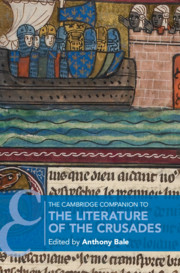Book contents
- The Cambridge Companion to the Literature of the Crusades
- The Cambridge Companion to the Literature of the Crusades
- Copyright page
- Contents
- Figures
- Contributors
- Chronology
- Abbreviations
- Introduction
- Part I Genres
- Part II Contexts and Communities
- Part III Themes and Images
- Part IV Heroes
- Part V Afterlives
- Further Reading
- Index
- Cambridge Companions To…
- References
Further Reading
Published online by Cambridge University Press: 14 December 2018
- The Cambridge Companion to the Literature of the Crusades
- The Cambridge Companion to the Literature of the Crusades
- Copyright page
- Contents
- Figures
- Contributors
- Chronology
- Abbreviations
- Introduction
- Part I Genres
- Part II Contexts and Communities
- Part III Themes and Images
- Part IV Heroes
- Part V Afterlives
- Further Reading
- Index
- Cambridge Companions To…
- References
Summary

- Type
- Chapter
- Information
- The Cambridge Companion to the Literature of the Crusades , pp. 263 - 270Publisher: Cambridge University PressPrint publication year: 2019



